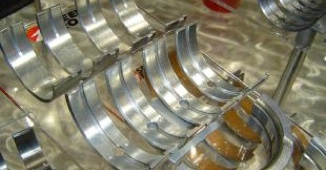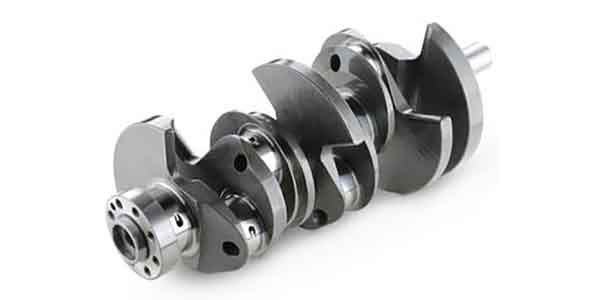 What’s needed to keep the rotating assembly rotating? It’s a recipe that includes three key ingredients: the bearing, the crankshaft and the oil. But understanding the part each plays as part of this recipe is what’s needed to keep your engines’ bearings from failing.
What’s needed to keep the rotating assembly rotating? It’s a recipe that includes three key ingredients: the bearing, the crankshaft and the oil. But understanding the part each plays as part of this recipe is what’s needed to keep your engines’ bearings from failing.
When it comes to understanding what keeps a bearing from failing you must keep in mind that each ingredient, the bearing, the oil and the crankshaft all play a part in the recipe for long bearing life.
Changes in engine oil have caused manufacturers to make changes to bearings and crankshafts to make the recipe provide better bearing life than we have ever seen.
Let’s get a picture of how little clearance can be between a bearing and the crankshaft. The large circle represents what is supposed to be the diameter of a human hair. Note how small the .0001” circle is compared to a human hair.
Now let’s take a good look at the clearances between a crankshaft and bearings. Recently there has been a good awareness about the “hydrodynamic wedge” of oil that moves the crankshaft off center when the engine is running. That means that a bearing clearance that might be .002” could only be .0002” to .0003” between the bearing and crankshaft when the hydrodynamic wedge of oil moves the crankshaft off center. This is OK as long as this slight film of oil between the crank and bearing is not ruptured allowing crankshaft to bearing contact.
The quality of OE crankshaft surfaces has kept pace with the changes in oil. OE’s are requiring surface finish requirements that were almost pure fantasy years ago. Keep in mind that not only the surface finish is critical to keep from rupturing the oil film but the geometry of the journal is as critical. Out of roundness and taper used to have wide tolerances. It used to be common to allow a combination of .0005” out of round and taper. This tolerance did not create problems with heavier oil and larger bearing clearances, but today it is not acceptable.
High quality crankshaft manufacturing machines and the use of hard shoe polishers have changed the way OE’s and aftermarket suppliers can mass produce crankshafts that have the right ingredients to make the oil, bearing and crankshaft recipe work.
If your shop is lucky enough to have a profilometer you should be able to measure the surface finish of a journal. With a good quality micrometer and an experienced machinist the size, roundness and flatness can be measured. The problem some shops have is that their measuring equipment can also be experienced and might not be as accurate as it was when it was new.
Just be careful if you are using a belt style of crankshaft polisher that you don’t change the geometry. Flatness and taper are critical to keep from rupturing the very thin oil film between the crank and bearing. You can’t have good bearing life if the crankshaft is not good enough to be part of the recipe.
By Lyle Haley, The Shop Doc














